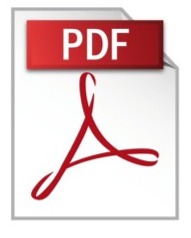
 Download our Quick
Start Guide
Download our Quick
Start Guide
 Download the White
Paper: Electrostatic Sprayers
Download the White
Paper: Electrostatic Sprayers
Click on a question to see the answers.
Any barrier, something between the surface you want to disinfect and the disinfectant spray, prohibits the disinfectant from destroying or inactivating the microorganisms on the surface face.
Disinfecting uses disinfectant to destroy or irreversibly inactivate the microorganism. Sanitation services use chemicals to reduce but not always eliminate microorganisms from the surface.
Save Time and Money: Electrostatic Spraying gets underneath chairs, tables and shelves, and wraps around objects to cover all sides by adding a negative charge to the mist. The use of electrostatic sprayers provides precise application of disinfectants and complete coverage top to bottom while reducing application time.
Recurring disinfecting services benefit high traffic businesses who see a lot of customers daily. Essential businesses that support public needs so they can remain open.
The EPA has released List N: Disinfectants for Use Against SARS-CoV-2. This is a list of EPA chemical registrations that have been deemed effective against "Emerging Pathogens", or those viruses more hard-to-kill or similar to coronavirus COVID-19. You can verify the chemicals used in your facility are listed in two ways: by either finding the EPA’s Emerging Pathogen disclosure/badge on the label or by comparing the first two sections of the EPA Registration number and comparing it with the chemicals on List N. More information can be found on the EPA’s FAQ Page
After Each Use and Before Storing: Spray water through the machine for 20 seconds to rinse out leftover chemicals, otherwise the nozzle will plug up.
The Nozzle is plugged! Remove the nozzle, soak in hot, soapy water for 10 minutes, and then blow out the nozzle, preferably with compressed air.
Chemical Storage: Chemicals should be stored outside in a separate container with clear markings.
Variables like temperature, humidity, particle size and the chemical used effect drying time. Smaller nozzle particle size selection reduces dry time.
The optimum range is 20 - 30 inches for complete coverage and depending on the nozzle size.
There is no need to touch or wipe the surfaces (dependent on solution spraying). This provides a fast and effective application method, while using less solution.
In most cases, a spray-and-wipe technique can move bacteria from one surface to another. Cross contamination can be considerably reduced due to the touchless effect of the Sprayer.

